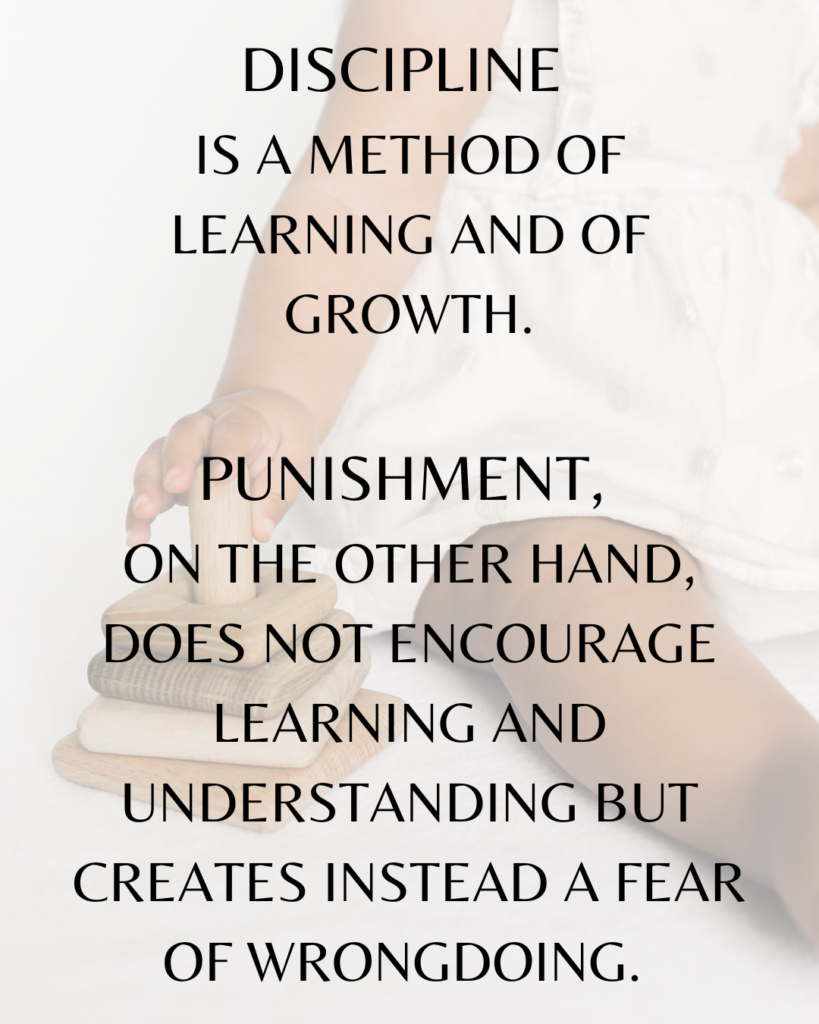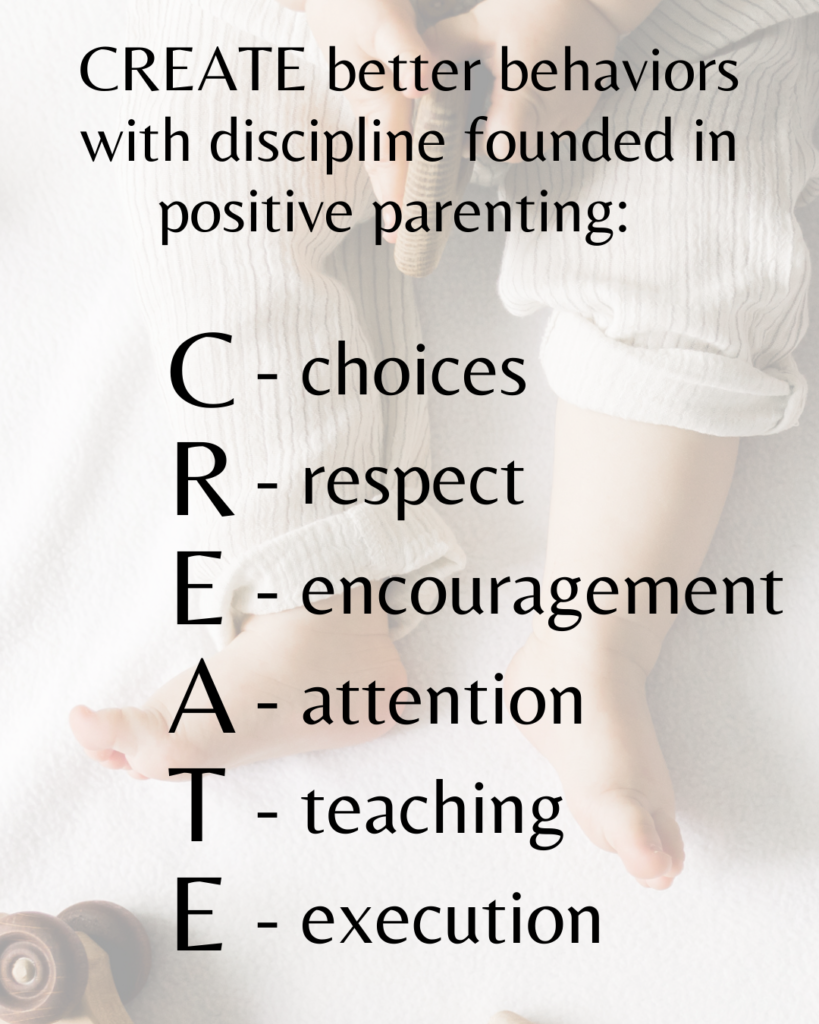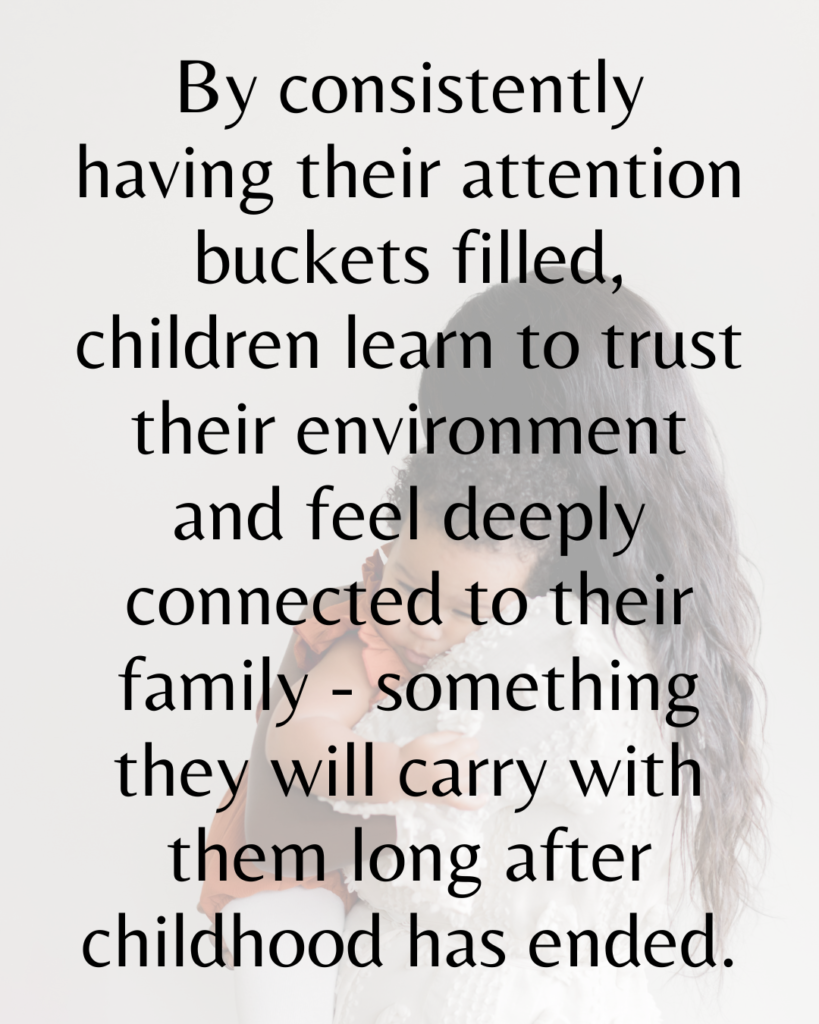How to Discipline Your Kids with Positive Parenting
Do you feel frustrated or overwhelmed when it comes to disciplining your child? Do you feel like nothing seems to work and all of your attempts at discipline just seem to lead to more conflict in the household? Does it feel like ‘discipline’ and ‘positive parenting’ don’t even belong together in the same sentence? I am here to tell you that with (proven!) positive parenting techniques, you can create a predictable and secure environment while still holding rules firm. By disciplining with positive parenting, your home will be calmer, your children will learn positive behavior and you’ll see changes almost immediately.

Before we get into it, I’d like to take a moment to discuss discipline vs. punishment. Discipline is an often misconstrued concept. It is not punishment or control, but rather a guiding and teaching towards positive behavior. Discipline is a method of learning and of growth.
Punishment on the other hand, is a reactive form of parenting, and usually can be seen as punitive. It does not encourage learning and understanding, and instead creates a fear of wrongdoing.
Discipline is not only more effective, it’s also a more fulfilling way to parent.
Let’s learn how to CREATE better behaviors by using discipline with foundations in positive parenting:

Choices
Providing options allows kids to see the positive results of their choices or take responsibility for the consequences. This encourages problem solving, accountability, self-confidence, and resiliency.
So how do you implement this?
One of my favorite positive parenting phrases that I use constantly is:
“If you choose _____, then you choose ______.”
In order to be effective and respectful when using this phrase, I encourage you to read my post on the Importance of Choice in Discipline with Positive Parenting.
EXAMPLES:
“If you choose to throw your toys, then you’re choosing to put them away for the rest of the day.”
“If you choose not to wear your helmet when you ride your bike, then you choose not to ride your bike.”
Respect
By approaching your child with respect, you are more likely to reduce power struggles and encourage positive behavior (not to mention build a more positive relationship and foster a happier, healthier child). For this to be true follow these steps:
- Step 1: Approach your child with curiosity by asking yourself, ‘Why is my child engaging in this unwanted behavior?’
- Are they tired? Hungry? Upset about something? If you answer yes to any of these questions, solve the problem! If none of these seem to apply, move on to step 2.
- Note: Shifting to curiosity instead of frustration can be all the difference you need to make more respectful parenting choices (not judgement – we’ve all been there!)
- Are they tired? Hungry? Upset about something? If you answer yes to any of these questions, solve the problem! If none of these seem to apply, move on to step 2.
- Step 2: Keep the goal of teaching in mind (more on this below) and focus on positive phrasing.
- Try using positive alternatives to negative phrases, like, “Keep the water in the bath!” instead of, “No splashing!” or “Walking feet, please!” instead of, “Don’t run!”
Encouragement
A key part of discipline with positive parenting is to focus on encouragement. This isn’t about ignoring misbehavior, but about actively noticing and praising the good behaviors your child exhibits, small and large. You can also encourage them to make better choices and show them that you believe they can do it.
Have you heard the famous 5:1 rule according to relationship expert John Gottman? He says that for every one negative feeling or interaction between partners, there must be five positive feelings or interactions.
I believe this is true in parenting as well! Maybe even more so. The best way to start improving your ratio with your child is to start actively focusing on positive interactions. Before long it will become second nature.
EXAMPLES:
“I noticed you threw your dirty clothes in the hamper. Thanks for taking care of your things!”
“I saw you help your brother when he was feeling sad. That was so kind!”
“Thank you for cleaning up your toys when I asked you to.”
“I heard you apologize to your brother, that was a great choice.”
Attention

A beloved positive parenting principle is the idea that every child has a figurative ‘attention bucket’ that needs to be filled daily. It’s our job as parents to replenish their buckets regularly with moments of heartfelt connection, eye contact, warm words, playful interaction, hugs, and kisses.
When an attention bucket needs refilling, kids are more likely to seek attention by misbehaving. However, with a full attention bucket, children are less likely to try to get a big reaction from us. By consistently having their attention buckets filled, children learn to trust their environment and feel deeply connected to their family – something they will carry with them long after childhood has ended.
Filling a child’s attention bucket doesn’t need to be a full-time job. Check out 7 Easy Ways to Fill Your Child’s Attention Bucket.
Teaching
Let’s face it, kids are going to make mistakes. They’re going to test the boundaries and push the limits (and our buttons!) – that’s their job. It’s how they learn. When we, as parents, can recognize the opportunity those instances offer as teaching moments, the real magic begins. Here is my two-step process for teaching:
- Step 1: Lead by Example. Whatever lesson you want to teach your kids, be a model and show yourself actively using that lesson. This can happen when you are truly dealing with something – just make sure your kids see you handling it – or you can fabricate an experience.
- Want to teach emotional regulation? When you’re driving say, “I’m so frustrated that car just cut me off! That made me so angry! I’m going to take a couple deep breaths to calm down. Phew, I feel better!”
- Want to teach accountability? Apologize to your kids. “I’m sorry for yelling earlier. I let my anger get the best of me.”
- Step 2: Use Loving Lessons. Don’t try to correct behavior in the heat of the moment, your kids won’t hear you and chances are you won’t like the way you handled it. Instead try these:
- Prepare beforehand: “We’re going to the pool today. It’s not safe to run by the pool because the water makes it slippery. You could fall and get hurt. If you have trouble remembering, I’ll remind you to use your walking feet.”
- Correct before it escalates: “I notice you’re splashing in the tub. When we splash it gets water all over the bathroom and makes a big mess. It also makes the floor slippery and someone could fall and get hurt. In the bath we always keep the water in the tub!”
- Reflect afterwards: “I asked you to use your quiet voice during the movie because the people around us wanted to hear what was happening in the movie, and they couldn’t hear over your voice.”
Execute
The final, and perhaps most important step in disciplining children with positive parenting is to execute. Consistency is key; that means not giving up if you encounter challenges or frustrations during your journey (spoiler alert: you’re going to). Cut yourself some slack, but keep going! Remind yourself that you’re making progress and the results are so worth it.
Parenting is hard, but using positive parenting techniques can help you to be more effective in disciplining your children while also creating a healthier relationship with them. These tips are a great starting point for using positive discipline with your kids, but it will take time and practice to really master the art of positive parenting. So don’t get discouraged if things don’t go perfectly at first. Just keep trying and remember that every little bit helps. How will you implement these tips into your parenting? Do you have any other tips for using positive discipline? Share them in the comments below!
How to Continue your Positive Parenting Journey:
- Subscribe to That Quiet Newsletter – You’ll get exclusive content, first dibs and promos on resources, and more!
- Explore my Positive Parenting Resources – Your one-stop shop for filling your parenting toolbox. More resources added weekly.





